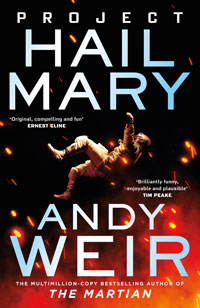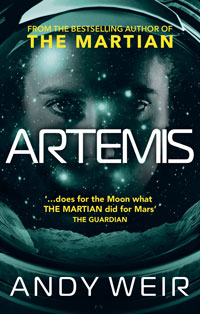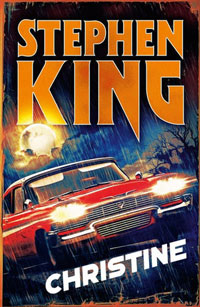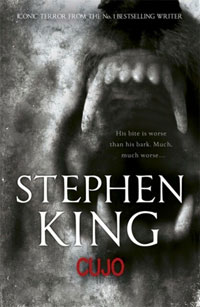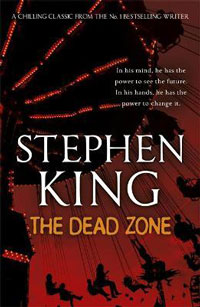(Oct 19 – Nov 1)

It’s possible that Misery might be Stephen King’s best book (so far). Sure, it gets its fair share of acclaim, but it tends to sit there a little overshadowed by King’s more attention-grabbing works—you know, the ones with killer clowns, or possessed hotels, or apocalypses. And right there is the thing that sets Misery apart: it’s King’s first novel with absolutely no supernatural element or inhuman monster involved (we’ll conveniently ignore short stories and novellas).
It’s also one of the rare King novels that’s largely free of what I’m going to call KingWuffel from now on: that being King’s propensity to waffle on in directions that have zero impact on the plot. The premise and structure of Misery has a lot to do with this, featuring just two main characters, a captor and a captive, only one of whom allows us inside their head. Furthermore, the plot, such as it is, mostly revolves around the psychological state of our two characters: as such, whatever KingWuffel there is ends up enriching the proceedings, rather than distracting from them.
Perhaps another reason Misery works so well is because it’s both metaphorical and deeply personal. It’s King responding to the trauma of being compartmentalised as a horror writer by his legions of fans. The novel was written in response to the negative reception towards King’s previous title: Eyes Of The Dragon, an all-ages fantasy novel (which I will be writing about next). From the very start of his career, King was wary about being typecast as a horror writer, and Eyes Of The Dragon demonstrates that he wasn’t necessarily wrong. Even his most recent attempt at the Great American Novel (It) did little to change that categorisation.
Another, perhaps more accurate reading (and this is by King’s own admission) is that Misery deals with the author’s own addictions (King was a huge alcoholic with a taste for cocaine thrown in for good measure). In this interpretation, King is still the imprisoned author, but Annie Wilkes is the spectre of his own addiction, isolating him and foiling his every attempt to break free.
Trauma may be a strong word to use when discussing one of the world’s most successful authors, but (perhaps unsurprisingly) Misery is absolutely steeped in trauma; so much so that I started looking into whether Misery was true or a problematic representation of such. After all, on the one hand, we have the monstrous and terrifying ex-nurse Annie Wilkes as the villain of the piece; on the other, we have a deeply troubled woman with long-term psychological issues. One thing I’ve found in King’s novels is that (accepting the times in which his novels were written) for every attempt he makes at inclusion, we’ll typically have a character doing a mock Southern plantation voice, or a casual use of the word ‘retarded’.
I’m not sure I’ve reached a definitive conclusion on Misery, but I do recommend a podcast called Freaks and Psychos, a series which discusses representations of disability in horror movies. After listening to their episode on Misery I’ve got a better appreciation for the range of trauma and disability that Misery represents (noting that the main character, following a near-fatal car accident, is also disabled) and that, while there are limits in King’s representation, he does draw deeply on his own pain and trauma to provide something that may actually give the able-bodied among us a bit of valuable insight.
The Adaptations
There is one adaptation of Misery. And also a sort of additional one.
The main adaptation I’m referring to is, of course, Rob Reiner’s excellent 1990 movie starring Kathy Bates and James Caan. I did not feel the need to rewatch this one as it’s pretty close to the novel (barring a few changes, most notably with the ‘hobbling scene’). Perhaps I also came away from the novel satisfied and not needing to see the same story told again (whereas other movie adaptations of King’s novels are often sufficiently different that it’s interesting seeing the story told in a different way, with different choices being made).
The other adaptation I mentioned is season two of the TV series Castle Rock (which I have not seen). This season revolves around the character of Annie Wilkes and serves as a prequel to Misery, providing (by all accounts) a sympathetic depiction of her descent into the terrifying character we meet in the novel.
The Reading
My reading of Misery got off to a slightly rocky start. The novel jumps right into the action and it took a chapter or two for me to adjust to the narrative style. It’s also a really, really grim book in parts. That said, I quickly went from “I can’t bear being locked in this room” to “I have to go back”.
In a lot of ways this is very reminiscent of Cujo: it’s an excuse to explore some deeply troubled characters in a literal life and death situation. While I eventually developed an admiration for what King did with Cujo, the novel (at the time) didn’t really work for me; it was too grim and I didn’t really like any of the characters. With Misery, both the characters and the situation are compelling enough that you find yourself wanting to go back, despite the horror of it all.
It’s one of King’s shorter novels, which also helps a great deal. It does what it sets out to do and doesn’t linger. I wouldn’t be surprised if, in an alternate reality, there’s a version where King chopped 300-400 words off the start of a much longer novel in order to plunge us, jarringly, right down to business.
I had read Misery before (no idea when) but I’d marked it down as a decent novel, one of King’s better known works, but nothing remarkable. So, I was surprised how much I enjoyed this reread, and it was probably the first time I’ve put one of these novels down and immediately started looking forward to the next time I get to pick it up and read it again.
The Top Ten
With a new King novel read it is, of course, time to revisit the Top Ten. And here’s what it’s looking like now:
Yes, Misery has landed pretty high there. There’s an argument to be made that it’s a better book than The Stand, but it’s going to take a lot to knock that favourite off the top spot. I considered dropping it below The Shining, but I think it just edges that one out.
The more interesting stuff is going on at the lower reaches there. Seeing that a new title has landed in the list, those of you who have been following this project might have reasonably expected Cujo to lose its coveted number 10 position. But there it is, hanging right in there!
So what got dropped?
Sadly, it’s time to say goodbye to that mid-tier early entry, Firestarter. It’s an enjoyable book, but I have to say it’s also proving a fairly forgettable one. The more I think about Cujo the more I wonder if I judged it too harshly. Either way, I’m still thinking about it, which means it gets to stay there. For now.

